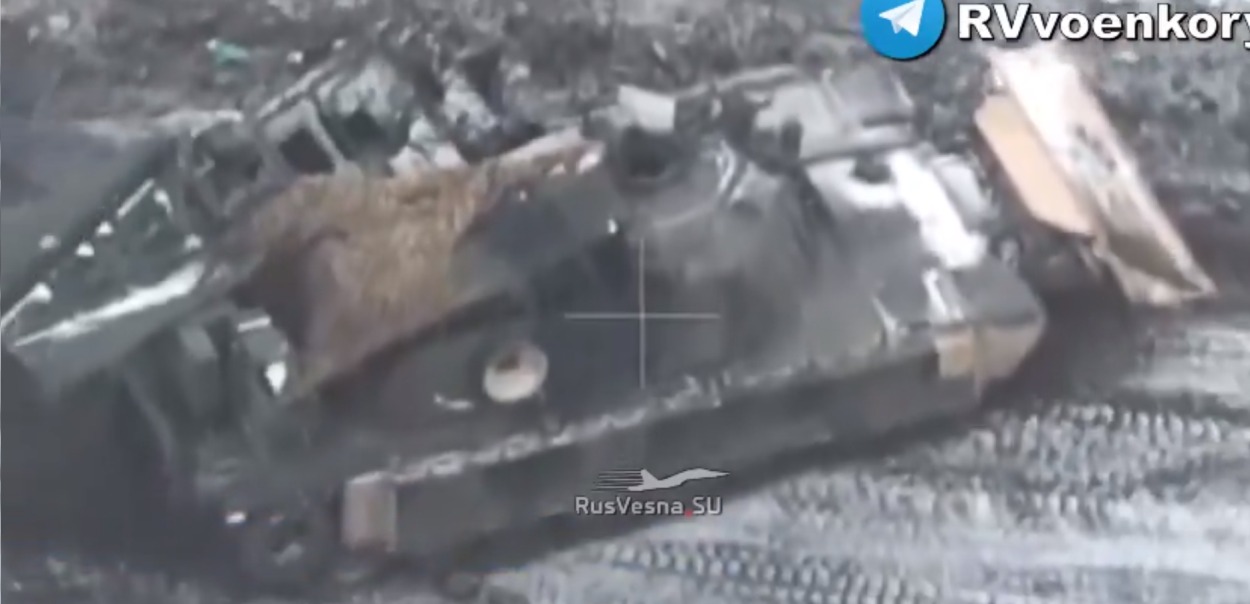The Russian military has claimed the destruction of another American M1 Abrams tank and an M2 Bradley infantry fighting vehicle (IFV) in Ukraine.
The Ministry of Defense of the Russian Federation released footage of the incident on May 4, showcasing the destruction of US-made MBT caused by high-precision artillery ammunition and unmanned aerial vehicles (UAVs).
According to a statement from the Russian defense department, military personnel operating FPV drones and artillerymen of the Center group of troops were responsible for the destruction.
The attack was carried out using high-precision “Krasnopol artillery ammunition” and UAVs, although specific details regarding the UAV used were not disclosed.
In the released footage, the tank’s crew can be seen hastily abandoning the Abrams before a Krasnopol artillery round strikes the rear of the vehicle, resulting in its destruction.
Un altro Abrams colpito e distrutto. Evidentemente per le Forze russe i mezzi americani non hanno misteri da rivelare. Non ci sono quindi motivi per preservarli integri pic.twitter.com/81Z8pHzkFK
— Alessio della Porta (@Alessio30109964) May 4, 2024
This recent incident adds to the tally of destroyed Abrams tanks, with Russian Defense Minister Sergei Shoigu in March stating that four Abrams had been destroyed since the beginning of 2024.
Russian media further claimed additional Abrams losses on April 1 and April 25, bringing the purported total to seven destroyed tanks. However, Western media sources contest these figures, indicating that only five of the 31 tanks delivered last year have been destroyed.
This development follows reports that Abrams tanks are being withdrawn from the frontlines, with Ukraine ceasing their use due to vulnerability to Russian drone attacks. The US plans to work with Ukrainian forces to revise tank deployment tactics in response to these threats.
Notably, one of the damaged Abrams tanks, targeted by an FPV drone, is currently being exhibited at an exhibition in Moscow’s Victory Park on Poklonnaya Gora.
Alongside the damaged Abrams, visitors can view other captured assets, including the German Leopard 2, Ukrainian T-72AG, Marder infantry fighting vehicles, British Saxon armored personnel carrier (APC), and other army vehicles.
Abrams Bite The Dust
The arrival of US M1A1 Abrams tanks in Ukraine was initially hailed as a potential game-changer in the conflict, poised to bolster Ukrainian forces against Russian aggression.

However, the widespread use of surveillance and kamikaze drones by Russia has led to significant setbacks for Ukraine’s armored fleets, including the costly loss of Abrams tanks.
The Abrams, each boasting a unit cost of approximately $10 million, have become targets in the escalating drone warfare over Ukrainian battlefields. Both sides have employed surveillance and strike platforms, resulting in attritional fighting that has marked Russia’s invasion.
Washington’s commitment to provide 31 Abrams tanks to Ukraine in January last year culminated in the arrival of the first batch in September.
Their combat debut in February this year was anticipated as a pivotal moment. However, Russian forces swiftly scored their first Abrams kill on February 26, just one day after the tanks were deployed.
After a mere two months in service, the Abrams tanks are now being withdrawn from the frontline, signaling a strategic reassessment.
Despite reports suggesting a retreat, Ukraine’s 47th Separate Mechanized Brigade, which operates the tanks, vehemently denied any withdrawal, affirming the invaluable role of the Abrams in providing fire support for infantry units.
Despite these claims, it’s evident that the performance of the Abrams tanks has not met expectations. This raises questions about the effectiveness of a weapon system designed by the US specifically to counter Russian forces.
It’s crucial to note that the Ukrainian Abrams tanks are not the latest and most advanced models available. Some features that enhance durability and firepower have been removed to prevent them from falling into Russian hands, potentially compromising their combat effectiveness.
On the other hand, Russian media has seized upon the perceived weaknesses of Western tanks, showcasing videos and images of defeated Abrams vehicles.
Russian soldiers on the ground have expressed disappointment, with one stating to the state-run TASS news agency, “It left a poor impression, and I expected something more.”
Moscow has consistently vowed to neutralize advanced Western weapons systems sent to Ukraine, arguing that such aid only prolongs the conflict without fundamentally altering the balance of power on the battlefield.
Kremlin spokesperson Dmitry Peskov emphasized this sentiment last September, highlighting the absence of a single weapon capable of shifting the dynamics of the ongoing conflict.
- Contact the author at ashishmichel(at)gmail.com
- Follow EurAsian Times on Google News